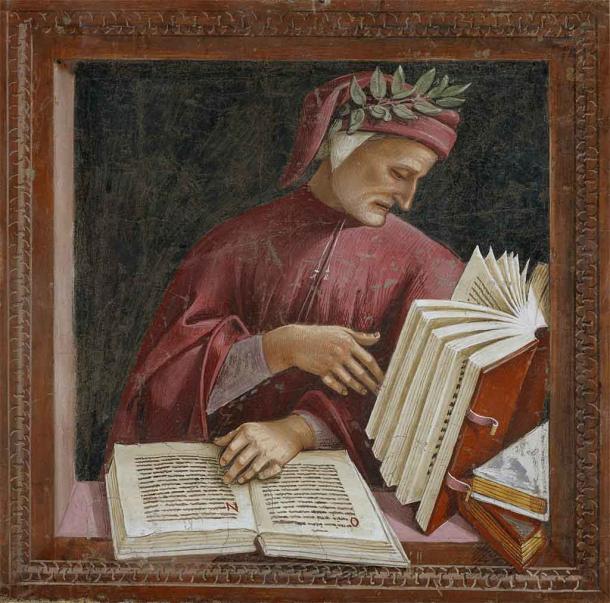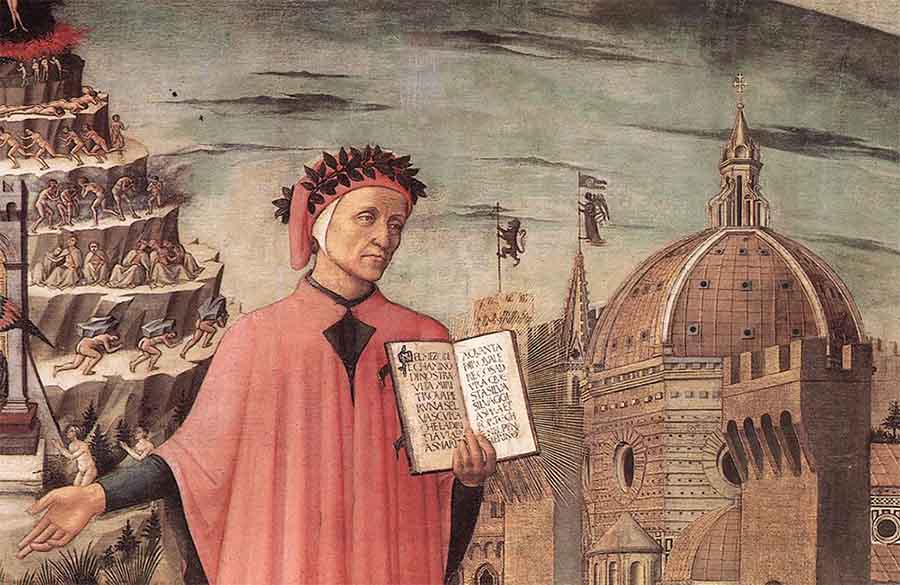Dante’s Handwritten Notes Discovered 700 Years After His Death
An Italian national treasure, and one of the greatest poets and writers to emerge from the Italian Middle Age (indeed, ever), Dante Alighieri was a 13th century and early 14th century writer who was writing at the time of Europe’s gravest crises. His contribution was so immense that he has shaped many facets of the contemporary, modern Italian language, with works like Divine Comedy and The New Life. Now, a Florence-based researcher has allegedly found a sample of his handwritten work, after centuries of no one having seen his penmanship.

Detail of fresco depicting Dante Alighieri. (Luca Signorelli / CC BY-SA 3.0)
The Divine Comedy and the Role of Brunetto Latini
The octogenarian British researcher, Julia Bolton Holloway, believes it is an example of the genius of the celebrated writer. Holloway taught Medieval Studies at Princeton University in New Jersey, before becoming a nun and running the English cemetery in Florence. Her findings have now been published in a book by the regional authority of Tuscany. These samples were found tucked away in two libraries in Florence and at the Vatican, hiding in plain sight, according to a report published in The Times. They are dated to Dante’s days as a student and scholar in Florence at the end of the 13th century.
- A Pilgrimage of Thought: the Politician, Poet, and Pilgrim called Dante Alighieri
- A Pilgrimage of Thought: The Divine Comedy by Dante Alighieri
At this time, Dante was engaged under the tutelage of Brunetto Latini, a 13th century Italian philosopher, politician, scholar and statesman, who was doubling up as Dante’s mentor. Latini, who is famous, amongst other things, for expounding the writings of ancient Roman philosopher Cicero as guidance in public affairs, was dictating works on the art of government to Dante, who was copying alongside. Incidentally, Ms. Holloway has studied Latini (also known as Latino) in depth for almost five decades.

An example of the handwritten manuscripts, believed to have been written by Dante, discovered in libraries in Italy by a medieval scholar based in Florence. (Biblioteca Medicea Laurenziana)
“The handwriting is schoolboy-like in the early manuscripts but the writing is in excellent Tuscan, which later provided the blueprint for Italian, and covers the ideas of ethical government which later showed up in the Comedy,” said Holloway. “Dante reports that Latino was his former teacher, but he really tarred and feathered him in his work, and as a result he has been overlooked,” highlights Holloway. “Perhaps it took a woman to pay attention to him,” she cheekily added. Incidentally, Latini appears in the Divine Comedy in hell in a section reserved for sodomites.
Divided into three parts – Inferno, Purgatario and Paradiso, the Divine Comedy is a long narrative poem in the Italian, taking the state of the soul after death, presenting an image of divine justice meted out as due punishment or reward. It dwells upon Dante’s travels into the aforementioned three realms, representing the soul’s journey towards God in an allegorical sense. Despite its spiritual and metaphysical subject matter, the Divine Comedy is studied in great detail by Italian schoolchildren even today.

Engraving of Divine Comedy showing Brunetto Latini accosting Dante, by Gustave Doré. (Public domain)
Dante and Latini: A Match Made in Paradiso
“Latini was steeped in the classics and during a period of exile in Spain learnt about astronomy and Aristotle’s work on ethics, all of which feeds into the Comedy,” explained Holloway. “He would dictate his work on ethics, rhetoric and politics to his students when he returned to Florence. So many of his words appear in the Comedy — he and Dante had the same mind,” she said. It is these notes that Holloway believes that Dante wrote or copied in his own handwriting.
In fact, a number of characters in Dante's Inferno, the first part of Divine Comedy, are also mentioned in documents Latini wrote in Italian. This is due to the affectionate and intellectual relationship that Dante and Latini shared, as the latter served as his guardian after Dante’s father died, reports The Daily Mail.
- A Pilgrimage of Thought: Dante Treks through the Inferno of Satan
- A Pilgrimage of Thought: Dante Ascends Mount Purgatory
According to Holloway, the notes she has discovered “are the only ones written in the so-called cancelleresca script, which Dante was likely taught by his father and are the only ones on cheap parchment, which makes sense given Dante was poorer than his fellow pupils.” There have been no discoveries of Dante’s own original, handwritten version of the Divine Comedy to date. Nevertheless, “Leonardo Bruni, a later Renaissance scholar who saw Dante's handwriting described it as being similar to the manuscripts I have found,” says Ms. Holloway.
The stunning discovery by Julia Bolton Holloway has appears to have been corroborated by a growing list of evidence. The presence of a hand-drawn square imposed on a circle on two of the manuscripts, also points to these having been written in Dante’s own hand. A part of popular culture today, Dante used this concept of juxtaposition in Divine Comedy to describe God.
Top image: Detail of Dante, between the mountain of Purgatory and the city of Florence by Domenico di Michelino. Source: Public domain
By Sahir Pandey


















Comments
I find John Ciardi’s translation of the Divine Comedy the best and easiest to read, with many valuable and informative footnotes to understand the people, events, and culture of the times. Dante was writing about contemporary figures as well as historic ones, and for many or most readers the names of most of them will be unknown. Other translations, although by eminent authors, are more formal, somewhat stilted and lack the pace and rythym of Ciardi’s version.
Absolutely fascinating. Thanks so much for this article. There’s so much left to be discovered. It’s exciting.